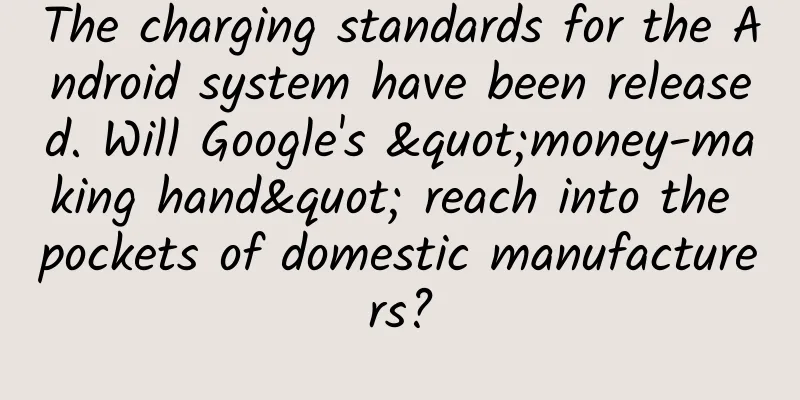Galaxy L7 and Shanhai L9, which extended-range SUV should you buy from traditional car companies?

|
In the first half of this year, Geely's new energy brand Galaxy launched a plug-in hybrid SUV - Galaxy L7, which achieved monthly sales of nearly 10,000 for six consecutive months, which is a very impressive sales volume. Recently, Chery's Jetour also launched a new plug-in hybrid SUV - Shanhai L9, which has attracted considerable attention on social media due to its appearance. So recently many friends have asked us: As plug-in hybrid SUVs launched by traditional car companies, which one is more cost-effective and more suitable as a family car, Galaxy L7 or Shanhai L9? Therefore, we selected the versions of each priced at 180,000 yuan: Galaxy L7 2023 1.5T DHT 115km Asian Games Phantom Edition and Jetour Shanhai L9 2024 1.5TD Pro, and compare them to see which of the two plug-in hybrid SUVs is more worth buying~ Design In terms of appearance, it is no exaggeration to say that if the logo of Galaxy L7 is covered, I believe many people may think that this is a pure electric SUV built by a new car-making force. Despite the use of plug-in hybrid technology, the front face of the Galaxy L7 adopts a closed design, and the air intake is only a small area at the bottom of the headlights. Combined with the through-type running lights and extremely rounded headlights, the entire front face looks very futuristic and sci-fi. From the side, except for the black version, all other color schemes use a floating roof design with contrasting colors. But to be honest, due to the curves on the top and other overly complicated decorative elements, the visual effect of the floating roof is not good. Instead, it looks a bit cheap. The design of the rear deserves praise because it is so simple and coordinated, which is a breath of fresh air in today's SUV market. Unlike the more original Galaxy L7, the Shanhai L9 adopts a design that is almost identical to the Ideal ONE. The front face is equipped with a through-type light strip, the curve of the front engine cover is relatively smooth, and the area of the air intake grille is very large. However, many triangular design elements are added on the top to fill it, which looks more interesting. The side lines of Shanhai L9 are soft yet muscular. Although it looks sportier than Galaxy L7, it is not as unique as a sports car. The rear design is a bit too complicated, and the line elements inside the brake light can be completely removed. This kind of young and sporty design element is unnecessary on the Shanhai L9, which has a stable overall shape. Power Performance In terms of performance, the engine of Galaxy L7 is a 1.5T 163Ps horsepower four-cylinder engine, and the engine of Shanhai L9 is a 1.5T 156Ps horsepower four-cylinder engine. Just from the parameters, it can be seen that if the engine is directly driven, the horsepower difference is only in the single digit on paper, and the difference is almost imperceptible in actual driving, not to mention that the weight of the two vehicles is exactly the same, both 1890kg. Therefore, if you want to compare the power of the two, the performance of the electric motor (pure electric drive mode) is the decisive factor. The Galaxy L7 uses a single motor with a horsepower of 146Ps, a power of 107kW, and a torque of 338N·m, while the Shanhai L9 uses dual motors with a total horsepower of 271Ps, a total power of 199kW, and a total torque of 395N·m. Compared with the Galaxy L7, in terms of performance, the Shanhai L9 is undoubtedly far ahead. For the target consumers of plug-in hybrid SUVs, most of the car usage scenarios are in urban areas. Therefore, in pure electric mode, Shanhai L9 can bring users a driving experience that is closest to a high-horsepower pure electric SUV. Even among plug-in hybrid SUVs of the same price, the power performance of Shanhai L9 is completely at the upper level. However, it should be noted that the chassis configuration of Shanhai L9 is slightly worse than that of Galaxy L7. For example, the rear suspension of Galaxy L7 is double wishbone and ventilated disc rear brake, while that of Shanhai L9 is rear multi-link and solid disc rear brake. Therefore, in extreme driving conditions, the long-term braking performance of Galaxy L7 is better. Therefore, even though Shanhai L9 is very powerful, we absolutely do not recommend that car owners engage in dangerous extreme driving. Safety must still be remembered. Pure electric range and energy replenishment In terms of pure electric endurance and energy replenishment, the Galaxy L7 uses an 18.7kWh lithium iron phosphate battery, which supports charging from 30% to 80% in 0.5 hours, and can provide a maximum CLTC endurance of 115kWh; the Shanhai L9 uses a 19.43 kWh ternary lithium battery, which can be fast charged from 20% to 80% in 0.42 hours, and can provide a maximum CLTC endurance of 108km. Judging from the range alone, there is basically no difference between the Galaxy L7 and the Shanhai L9. Although the battery capacity is not large, the pure electric range of about 100km is completely sufficient for commuting in the city. If the parking space at home supports the installation of a charging pile, the daily cost of using the car will be much lower than that of a fuel SUV. However, it should be noted that since the Galaxy L7 uses lithium iron phosphate batteries with relatively weak cold resistance, friends who use the car in cold northern regions will face a more serious problem of false battery life. The problem of discounted battery life is much more serious than that of the Shanhai L9 which uses a ternary lithium battery. Therefore, if you use a car in the Northeast or other areas where the temperature is below 0 degrees Celsius in winter, it is recommended to consider the Shanhai L9 with a ternary lithium battery, as its battery life is much better. In addition, since both offer a lifetime warranty policy with no mileage restrictions for the first owner, there is no need to worry about the battery pack lifespan reduction due to long-term use. Both are quite conscientious in this regard, so friends who want to use the car for a long time can rest assured. Cabin interior The cockpit has always been the advantage of Geely models. Therefore, for consumers who are interested in purchasing the Galaxy L7, the cockpit of the Galaxy L7 will definitely be a major reason to convince consumers to place an order. Although the cabin design of Galaxy L7 may not seem youthful enough at first glance, this is precisely due to the positioning of Galaxy L7 as a family SUV. Two words can be used to describe the cabin design language of Galaxy L7 - comfortable and simple. The high-frequency areas that users often touch are wrapped in soft materials, and supplemented by piano lacquer panels as visual embellishments, which looks both grand and not vulgar. In comparison, although the appearance of Shanhai L9 is very similar to Ideal ONE, the cockpit does not have the family-style design elements of Ideal ONE. Compared with Galaxy L7, there are not many soft materials in the cockpit, and the overall design gives people a relatively fresh and youthful feeling. For consumers who prefer this style, it is a good choice, but for family users, Galaxy L7 must be more suitable. It is worth mentioning that in addition to the cabin design style of Galaxy L7 being more popular among family users, its 16.2-inch co-pilot screen has also been well received by many hostesses, who believe that Galaxy L7 has taken family members into more thoughtful consideration in its cabin design and can well meet the entertainment needs of family members while riding. Summarize After our comparison, we have a clearer picture of the advantages and disadvantages of the two models, as well as which groups of people each is suitable for. For consumers who need a family car, if the winter temperature in your area is not particularly low, and there are other people in your family who need to drive the car besides you, then the Galaxy L7, with its simple and neutral design, comfortable and textured interior, is undoubtedly a more suitable choice for you than the Shanhai L9. For consumers who want strong power, can occasionally satisfy their needs for driving feel, and need a more cold-resistant battery, Shanhai L9 is one of the few models at the same price that can take both into account. If you don’t have high requirements for the cockpit, then Shanhai L9 is also a complete choice. As a winner of Toutiao's Qingyun Plan and Baijiahao's Bai+ Plan, the 2019 Baidu Digital Author of the Year, the Baijiahao's Most Popular Author in the Technology Field, the 2019 Sogou Technology and Culture Author, and the 2021 Baijiahao Quarterly Influential Creator, he has won many awards, including the 2013 Sohu Best Industry Media Person, the 2015 China New Media Entrepreneurship Competition Beijing Third Place, the 2015 Guangmang Experience Award, the 2015 China New Media Entrepreneurship Competition Finals Third Place, and the 2018 Baidu Dynamic Annual Powerful Celebrity. |
<<: The 14th Honda China Energy Conservation Competition was successfully held
Recommend
Scientists have discovered that the Komodo dragon's teeth have built-in iron armor that is incredibly hard!
Produced by: Science Popularization China Author:...
Will drinking edamame cause bone deformation? These things are the culprit
There was a news recently: An old man liked to ea...
Android system service WindowManagerService (WMS)
WindowManagerService(WMS) WindowManagerService is...
The deadline for the new mobile game policy is approaching, and some manufacturers may "go overseas" to make a living
The "Notice on the Management of Mobile Game...
Why is the new coronavirus always one step ahead of others?
As long as there are susceptible people, the viru...
Top 10 Core Data tools and open source libraries loved by developers
Core Data is a great choice for storing and query...
What is Kunming?
All along Kunming They are all well-known "S...
Why Google interviews never last longer than 30 minutes
As a hiring manager, if you are interviewing a jo...
In 2017, local subsidies for new energy vehicles were introduced one after another. Which region is the most eye-catching?
Recently, the China Association of Automobile Man...
Can robots give birth to babies? Are they considered living organisms? Experts explain
Recently, American researchers discovered a new w...
10 questions and answers about brand deductions on Xiaohongshu
Recently, brand partners have been discussing the...
The wrath of a fighting nation: Using Windows vulnerabilities to counterattack the United States
[[121269]] Russian hackers are exploiting vulnera...
Mi Meng appeared, and her fellow journalists stood up for her. They told some truths about self-media operations.
When talking about Mimi Meng and Uncle Tongdao , ...
Is it true that roses can also fight aging?
I often see netizens discussing anti-aging topics...
Maria Goeppert-Meyer, the "Onion Madonna" who deciphered the structure of the atomic nucleus
February 20, 2022 marks the 50th anniversary of M...









